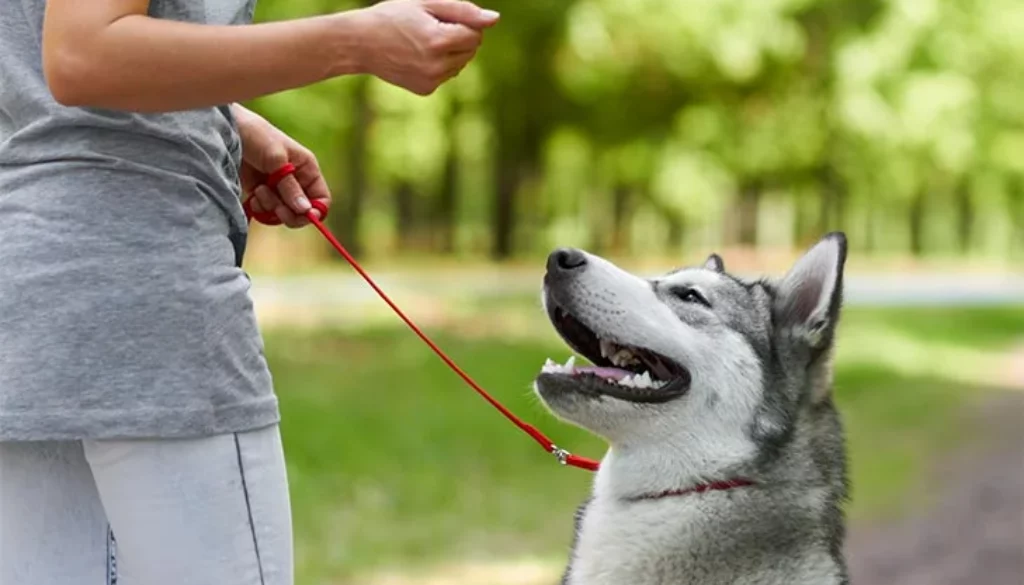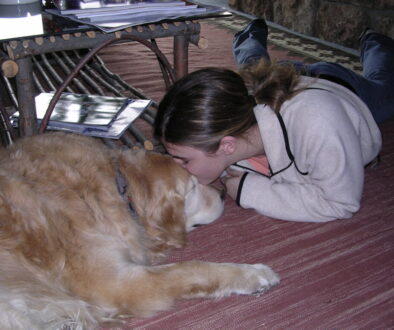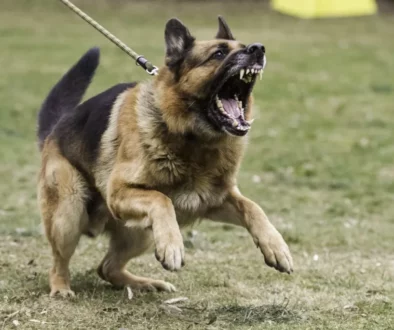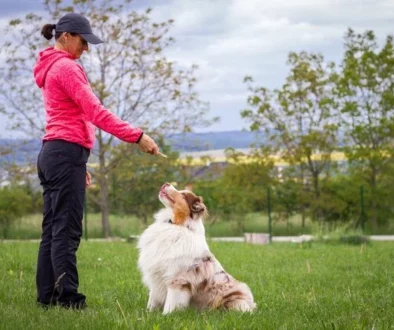Positive Reinforcement vs. Punishment: What Works Best in Dog Training
Positive Reinforcement vs. Punishment has been the subject of extensive research in the realm of animal behavior and training. Both approaches aim to shape the behavior of dogs, but they utilize different strategies. This article will delve into the concepts of positive reinforcement and punishment, highlighting their benefits and drawbacks. By understanding these training methods, dog owners can make informed decisions that will have a profound impact on their furry companions’ well-being.
Positive Reinforcement: Definition and Benefits
Positive reinforcement involves rewarding desired behaviors to encourage their repetition. It relies on the principle that dogs will associate a favorable outcome with their actions, increasing the likelihood of them repeating those actions. This training method is widely regarded as an effective and humane approach that strengthens the bond between dogs and their owners.
Building Trust and Positive Associations
Positive reinforcement creates a positive and trusting relationship between dogs and their owners. By using rewards such as treats, praise, or playtime, dogs associate good behavior with enjoyable outcomes. This leads to enhanced obedience, improved communication, and a happier pet-owner dynamic.
Boosting Motivation and Confidence
Rewarding desired behaviors empowers dogs and boosts their confidence. This motivation helps them learn and retain new commands and tricks more effectively. Positive reinforcement focuses on encouraging successes rather than dwelling on failures, which promotes a positive learning environment.
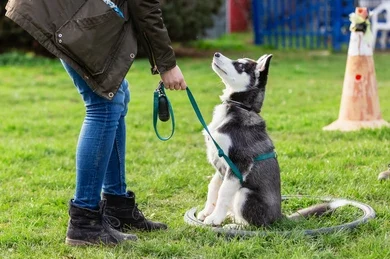
Punishment: Definition and Drawbacks
Punishment, on the other hand, involves applying negative consequences to discourage unwanted behaviors. It relies on the principle that dogs will associate undesirable actions with unpleasant outcomes, leading to behavior suppression. While punishment may appear effective in certain situations, it comes with several drawbacks.
Fear and Anxiety
Punishing a dog can lead to fear and anxiety, resulting in long-term behavioral issues. Dogs may become apprehensive, stressed, and exhibit avoidance behaviors. This can be detrimental to their overall well-being and may damage the trust and bond between dogs and their owners.
Inhibition of Natural Behaviors
Punishment-based training often suppresses natural behaviors rather than addressing the underlying causes. It focuses on stopping undesirable behaviors without providing alternative outlets or addressing the root of the problem. This can lead to frustration, increased stress levels, and potentially more severe behavioral issues down the line.
Understanding Dog Behavior
Before diving into the specifics of positive reinforcement and punishment, it is crucial to understand the basics of dog behavior. Dogs, like any living beings, have their instincts, motivations, and unique personalities. Recognizing these factors is essential for effective training.
Instincts and Drives
Understanding a dog’s natural instincts and drives allows trainers to tailor their training approach accordingly. Dogs have innate instincts, such as seeking food, social interaction, and exploration. Harnessing these instincts can greatly enhance the effectiveness of training techniques.
Reinforcement and Motivation Factors
Different dogs respond differently to various forms of reinforcement. Factors such as food, praise, toys, and affection can serve as powerful motivators, but their effectiveness may vary from dog to dog. Discovering what motivates a dog is crucial for successful training outcomes.
Principles of Positive Reinforcement
Positive reinforcement is grounded in several key principles that contribute to its effectiveness. These principles lay the foundation for successful dog training and promote a harmonious relationship between dogs and their owners.
Rewards and Timing
Timely rewards play a vital role in positive reinforcement. Dogs need immediate feedback to accurately associate their behavior with the desired outcome. By providing rewards within a few seconds of the desired behavior, dogs can understand the connection and reinforce positive habits.
Consistency and Repetition
Consistency is key in positive reinforcement training. Dogs thrive on routine and predictability, so consistent reinforcement helps them understand expectations. Repetition of commands and behaviors helps dogs reinforce their understanding and allows for better retention.
Gradual Progression and Challenge
Positive reinforcement training should gradually progress in difficulty to keep dogs engaged and motivated. Starting with simple commands and gradually increasing complexity challenges dogs and ensures continued growth and learning.
Applying Positive Reinforcement in Dog Training
Now that the principles of positive reinforcement have been established, it’s essential to explore practical ways to implement this training approach effectively.
Define Clear Goals and Commands
Setting clear goals and commands is crucial in positive reinforcement training. Dogs thrive on clarity and consistency, so owners should establish precise objectives and use consistent language to avoid confusion.
Use Varied and Meaningful Rewards
To keep training engaging and motivating, it’s crucial to use a variety of rewards. While treats are commonly used, they should be supplemented with other forms of rewards such as verbal praise, petting, or playtime. Tailoring rewards to each dog’s preferences ensures maximum effectiveness.
Capture and Shape Desired Behaviors
Positive reinforcement involves capturing and shaping desired behaviors. Capturing involves rewarding behaviors dogs naturally exhibit while shaping involves breaking down complex behaviors into smaller achievable steps and rewarding progress along the way.
Employ Positive Reinforcement in Everyday Life
Positive reinforcement should extend beyond formal training sessions. Incorporating it into everyday interactions with the dog helps reinforce good behavior consistently. This includes rewarding desired actions during walks, playtime, and mealtime.
Examples of Positive Reinforcement Techniques
Positive reinforcement encompasses various techniques that can be customized to suit individual dogs and their specific needs. Here are some examples of effective positive reinforcement techniques:
Clicker Training
Clicker training involves using a clicker to mark the desired behavior followed by a reward. The sound of the clicker serves as a unique signal that dogs quickly associate with positive outcomes.
Treat-Based Training
Treat-based training involves using food rewards as a primary motivator. Treats can be given immediately after the desired behavior or used intermittently for more challenging tasks. High-value treats are particularly effective for training complex behaviors.
Verbal Praise and Affection
Verbal praise and affection are simple yet powerful forms of positive reinforcement. Dogs respond positively to enthusiastic verbal cues, such as “good job” or “well done,” accompanied by petting and gentle touch.
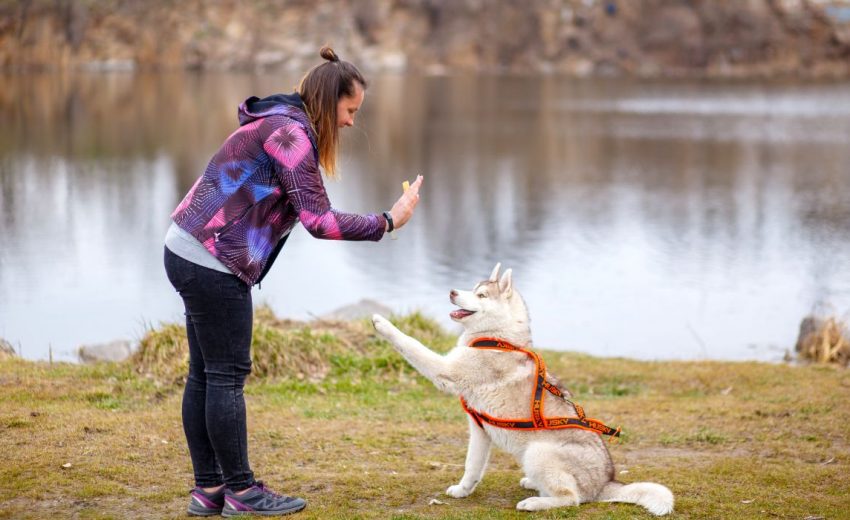
Playtime and Interactive Toys
Playtime and interactive toys provide mental stimulation and physical exercise while reinforcing positive behavior. Using toys and play as rewards can be highly effective for energetic dogs who enjoy interactive and engaging activities.
Addressing Common Myths
Positive reinforcement training often faces several misconceptions that can hinder its widespread adoption. Addressing these myths helps shed light on the true potential of this training approach.
Myth: Positive Reinforcement Equals Constant Treatment Reliance.
Fact: While treats initially play a significant role in positive reinforcement, they can be gradually phased out over time. The goal is to transition to intermittent reinforcement and utilize other forms of rewards, such as praise and playtime.
Myth: Positive Reinforcement is Only Suitable for Basic Training.
Fact: Positive reinforcement is a versatile training approach that can be applied to basic obedience as well as advanced training. This method is effective in teaching complex behaviors, agility, and even tackling behavior issues.
Myth: Positive Reinforcement Spoils Dogs.
Fact: Positive reinforcement does not spoil dogs; instead, it fosters stronger bonds and improves their overall well-being. It encourages positive behavior, reduces anxiety, and helps dogs become well-adjusted and socially adept.
Potential Challenges and How to Overcome Them
Despite its effectiveness, positive reinforcement training may present certain challenges. Identifying these challenges and knowing how to overcome them is instrumental in ensuring successful training outcomes.
Lack of Motivation
Some dogs may initially lack motivation to perform the desired behavior. In such cases, it is crucial to reassess the rewards being offered and find what genuinely motivates the individual dog. Adjusting the reward system can reignite motivation and enthusiasm.
Inconsistent Training
Inconsistency in training can lead to confusion and hinder progress. It is essential to establish a consistent routine and ensure all members of the household follow the same training protocols. Consistency allows dogs to understand expectations and reinforce positive habits effectively.
External Distractions
External distractions, such as noise or other animals, can disrupt training sessions. Gradually exposing dogs to distractions and gradually increasing their intensity will help dogs build focus and concentration, even in challenging environments.
The Role of Punishment in Dog Training
While positive reinforcement is widely recommended, punishment does have a place in dog training, albeit with caution and careful consideration. Understanding when and how to apply punishment is crucial to prevent negative consequences.
Limited Situations for Punishment
Punishment should only be used sparingly and in specific circumstances. It should be reserved for immediate safety concerns, such as preventing harm or dangerous behaviors. Focusing solely on punishment can damage the dog-owner relationship and hinder long-term behavioral progress.
Clear Communication and Timing
When utilizing punishment, clear communication and precise timing are paramount. Dogs must associate the punishment with the unwanted behavior and not the owner or the training environment. Swift and immediate correction, without aggression or physical harm, can help deter undesired behaviors effectively.
Drawbacks and Risks of Punishment-Based Training
Punishment-based training carries several drawbacks and potential risks that should be carefully considered before deciding to incorporate it into training methods.
Fear and Aversive Consequences
Punishment often induces fear, stress, and anxiety in dogs. This fear can escalate into aggression, avoidance behaviors, or learned helplessness. Dogs trained through punishment may become disengaged, anxious, and even exhibit signs of depression.
Ineffective Long-Term Results
Punishment-based training tends to focus on immediate suppression of unwanted behaviors rather than addressing underlying causes. While it may lead to short-term changes, the absence of positive reinforcement and addressing root issues may result in the re-emergence of problematic behaviors.
Risk of Aggression and Relationship Strain
Punishment can inadvertently instigate aggression or deteriorate the dog-owner relationship. Dogs subjected to physical punishment may associate fear and discomfort with their owners, leading to diminished trust and cooperation.
Alternatives to Punishment
Thankfully, several humane alternatives to punishment exist that promote effective dog training while preserving the well-being of our furry companions.
Redirection and Distraction
Redirecting dogs’ attention and offering alternative activities or toys can effectively discourage unwanted behaviors. This approach keeps dogs engaged and offers suitable outlets for their natural instincts and drives.
Behavior Modification Techniques
Behavior modification techniques involve addressing the underlying causes of unwanted behaviors and implementing positive reinforcement strategies to encourage alternative behaviors. This approach focuses on shaping behaviors and rewarding positive changes rather than punishing undesired actions.
Management and Prevention
Preventing access to situations that trigger undesirable behaviors can be an effective strategy. Management techniques, such as crate training or baby gates, can limit opportunities for unwanted behaviors while providing a safe and controlled environment for the dog.
The Importance of Consistency and Timing
Consistency and timing play pivotal roles in dog training, regardless of the chosen approach. Dogs thrive in structured environments, and owners must ensure consistent expectations and timely feedback to facilitate effective training outcomes.
Consistency in Expectations
Consistency starts with ensuring everyone involved in the dog’s training adheres to the same expectations. Inconsistently communicated or enforced rules can confuse dogs and hinder their progress. Clear guidelines and expectations help dogs understand what is expected of them.
Timely Feedback
Timely feedback is crucial for dogs to grasp the connection between their behavior and its consequences. Immediate reinforcement or correction helps dogs associate their actions with the desired or undesired outcomes. Timing reinforces the concept more effectively than delayed feedback.
Combining Positive Reinforcement and Punishment
While positive reinforcement is generally regarded as the preferred training approach, there may be situations where combining both positive reinforcement and punishment is deemed necessary. However, this approach requires finesse and careful implementation to maintain a balanced and humane training method.
Supplementary Role of Punishment
When combining positive reinforcement and punishment, the focus should remain primarily on positive reinforcement. Punishment should serve as a supplementary tool to address specific safety concerns or problematic behaviors that genuinely necessitate immediate intervention.
Balancing Rewards and Corrections
Balanced training involves using a combination of rewards and corrections. Emphasizing positive reinforcement creates a positive learning environment while using punishment sparingly and appropriately ensures an effective deterrent for specific behaviors.
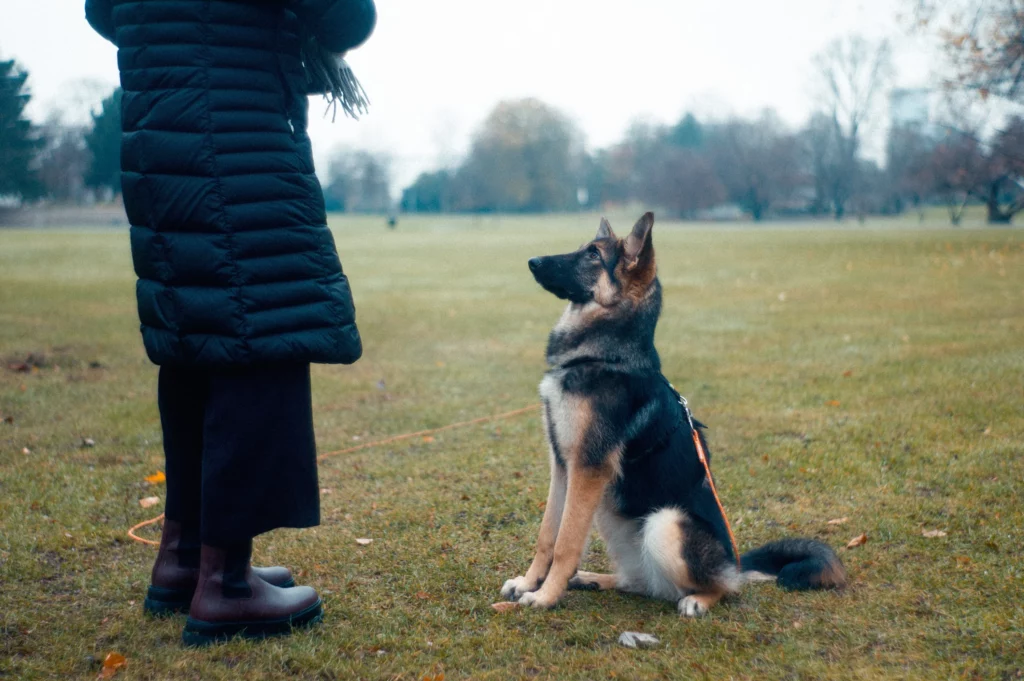
Conclusion
When it comes to dog training, positive reinforcement far outweighs punishment in terms of long-term effectiveness and the preservation of a healthy dog-owner relationship. Positive reinforcement builds trust, motivation, and confidence, shaping dogs into well-adjusted and obedient companions. While punishment may have limited applications for immediate safety concerns, positive reinforcement should remain the cornerstone of any training regimen.
FAQs
- Can you explain operant conditioning and its role in positive reinforcement?
Operant conditioning is a learning process that focuses on the consequences of actions. In positive reinforcement, operant conditioning involves rewarding desired behaviors to strengthen their occurrence. By associating rewards with specific actions, dogs learn to repeat those behaviors. - Will using positive reinforcement spoil my dog?
No, positive reinforcement does not spoil dogs. It enhances their well-being and fosters stronger bonds between dogs and their owners. Positive reinforcement focuses on encouraging and reinforcing positive behaviors, allowing dogs to become well-adjusted and socially adept. - Can punishment make my dog aggressive?
Yes, punishment can inadvertently provoke aggression in dogs. Using punishment as the primary training method can create fear, stress, and anxiety, which may manifest as aggressive behaviors. Positive reinforcement, on the other hand, promotes a safe and harmonious learning environment. - How long does it take to see results with positive reinforcement?
The timeframe for seeing results varies depending on the individual dog’s temperament, history, and the consistency of training. With positive reinforcement, dogs often show progress relatively quickly, but more complex behaviors may require longer training periods. - Is punishment the only way to correct my dog’s behavior?
No, punishment is not the only way to correct undesired behaviors. Positive reinforcement techniques, behavior modification, redirection, and management strategies can effectively address and correct various behavioral issues without resorting to punishment.
Also Read:
Pet Care Tips for Cats for Beginners
Pet Care Tips for Dogs for Beginners
